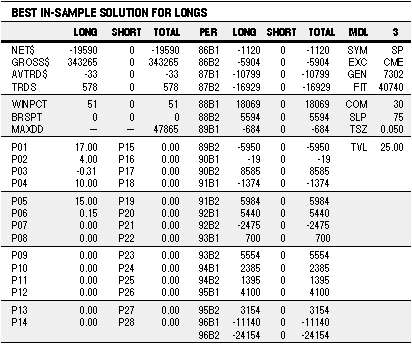ABOUT THE RULESA genetic algorithm solves a problem using the same processes as biological evolution: It works by recombination and mutation of gene sequences, which in our case may be sets of number series.
In this current effort, I focus on simple rules that may easily be manipulated and optimized without the aid of fancy technology. Recently, I developed a Standard & Poor's 500 trading system using this approach. I had two rules, each with a parameter or two, and I simply played with different values of the parameters until I found a set that traded the way I liked.

BUT FIRST, SOME INTERPRETATIONS
Before discussing the results, certain elements of the performance summaries presented in Figures 1 through 9 require some explanation. Depending on whether the solution is for the long or short side, values will be presented in the Long or Short columns, respectively; the values in the Total column are the result of adding both columns.
For more information on system implementation and the TradeStation system module, click on the sidebar "System Implementation."